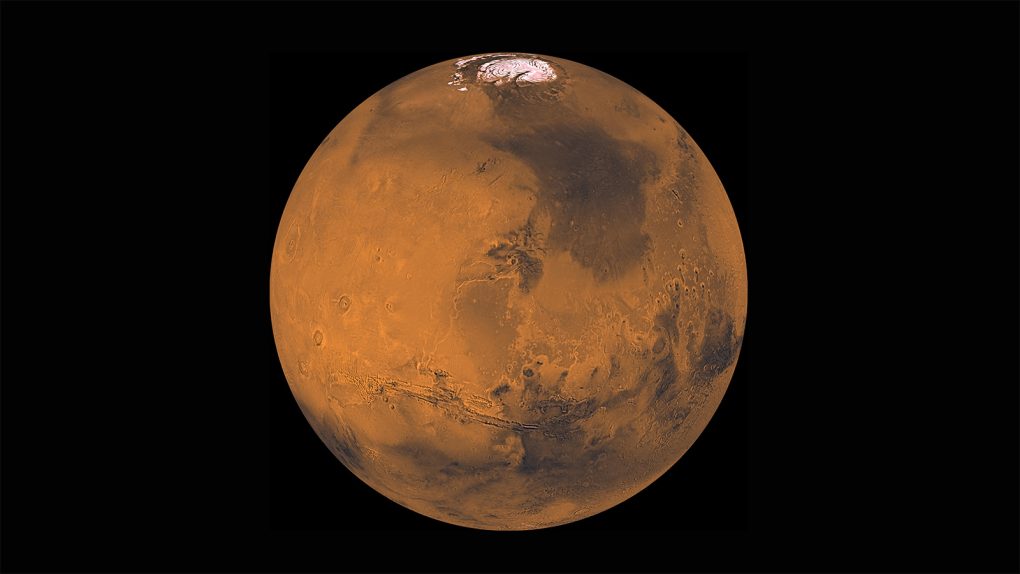When you think of the surface of Mars you probably think of a dusty, largely featureless wasteland of orange dust and jagged rocks right? Thanks to countless photos and videos delivered by rovers exploring the red planet, we’ve all grown to think of it as a big ball of barren nothingness, but that might not actually be the case — at least if you’re hanging out on one of its poles. New research suggests that it snows pretty regularly on Mars, as long as you know where and when to look.
We’ve known for some time that snow exists on the Martian surface, and that it’s almost entirely confined to the north and south poles. What scientists hadn’t been able to determine is exactly when that snow actually falls or the conditions under which it occurs.
Now, a new research effort documented in the journal Nature Geoscience reveals how advanced computer simulations have helped scientists predict how a Martian winter occurs. The research suggests that night is the key, and that rapidly cooling temperatures during sunsets could kick up winds, prompting the formation of clouds, with snowfall following shortly thereafter.
The snow on Mars, which we know from prior data is made of both water and carbon dioxide, likely falls in thick columns, blanketing the surface of the planet’s poles, the simulations suggest. Scientists are hopeful that the research could help inform further climate models of Mars, and potentially even offer an explanation for how movement of water around the planet played a role in its drying.








